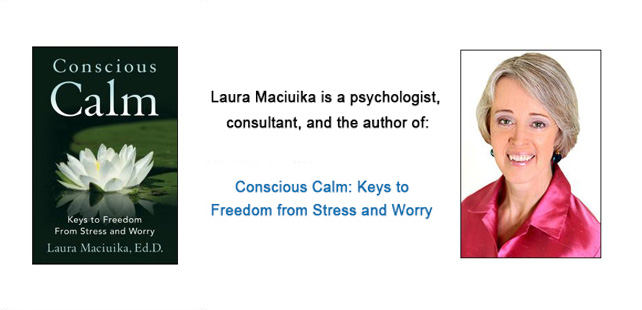 You’ve heard it before – “Just think positive thoughts.” When there is a lot going on and stress is high, it’s easy to feel overwhelmed. One common message is to be watchful of negative thinking, and to think positive thoughts instead to experience stress relief.
You’ve heard it before – “Just think positive thoughts.” When there is a lot going on and stress is high, it’s easy to feel overwhelmed. One common message is to be watchful of negative thinking, and to think positive thoughts instead to experience stress relief.
This is a complicated message, and can cause confusion. When stress is high, chronic, or close to out of control, it’s true that negative thinking can play a part. It can be difficult not to worry (a kind of negative thinking, after all), and shifting into positive thinking can be a challenge.
However, simply striving to move into constant positive thinking instead rarely works. In fact, I would say that when stress is high, chronic, and of the negative, grinding variety, just shifting into positive thinking can never work for long as a stress relief method.
Why is that? Is it a lack of willpower or discipline? I hear some people criticize themselves, feeling like failures because they have not been able to keep up the positive thinking. They soon found themselves back in negativity and more stress.
One challenge is that thinking itself, whether so-called positive or so-called negative, can intensify the experience of feeling “stressed out.” Focusing on thinking and tinkering with that without looking any further isn’t enough. It’s important to pay attention to the emotions in the mix, not just the thoughts. Emotions are the body-mind’s way of giving us information about our lived experience – that’s the emotions’ job.
However, when emotions are strong, or when some emotions are not welcomed or allowed when we are growing up, we may learn to push those emotions away. Actually, it’s a kind of pushing down, back into the body. Pushing emotions down instead of feeling them can become a habit. In general, we modern human beings have become very good at not feeling a full range of emotions, especially the more vulnerable ones. We’re pretty good at distracting from them, or masking them with food, alcohol or drugs. Another common pattern is to rely on one strong emotion, like anger or tearful sadness, and keep the rest of the emotions at bay with that. There is a wide variety of methods for not feeling emotions – including drowning them out with lots of thinking. Staying up in the mind, keeping a narrative going that is full of opinions and judgments, or facts, or stories of some kind – these, too, can keep emotions from being felt and known.
So substituting positive thinking for negative thinking isn’t likely to work very well, IF there is no attention paid to the emotions underneath. But with attention on the feelings that are present about the stress or challenges, there is a greater chance for actual stress relief. Emotions can signal what we need or want in the moment. When we turn our attention toward emotions instead of pushing them away or distracting from them, we connect better with what we want or need. When combined with a more positive approach to thinking and self talk, then stress relief and other positive shifts can occur. You just can’t rely on positive thinking alone to get you there.


